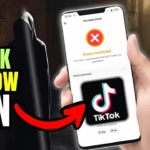Ever hit Post on TikTok, watch the progress bar finish, then see the clip vanish? It is a gut punch. Most surprise takedowns fall into three buckets: rule violations, copyright or music rights, and technical issues. This guide reflects common policies and norms as of October 2025.
Here is simple language for terms used in the app: removed means the video is taken down, under review means it is being checked and may be hidden, muted audio means the soundtrack is silenced but the video may stay up, visibility limited means fewer viewers see it.
Expect quick checks, clear fixes, and a short prevention checklist. Keywords covered include: Why TikTok deletes your video after upload, TikTok video removed, appeal TikTok removal, TikTok copyright, community guidelines 2025.
How TikTok Moderation Works After You Hit Post
After a video is uploaded, automated systems scan the visuals, audio, text, and metadata. If something looks risky, the system may hold it, reduce visibility, or mute the audio. Some cases move to a person for a second look. A final decision appears in notifications.
Sometimes a clip seems to disappear because it is still processing or it moved into an under review state. That can look like a deletion, even though it is temporary.
Outcomes vary. A video can be removed, muted, age-restricted, or limited in how many people can see it.
Auto checks: AI scans your video, audio, text, and hashtags
Automated review looks for:
- Risky visuals, for example weapons, graphic injuries, or sexual content.
- Audio matches, such as copyrighted songs that are not authorised.
- Text on screen and captions that include slurs, threats, or misleading claims.
- Hashtags connected to banned behaviour or unsafe challenges.
Reposting content that was flagged before can trigger instant takedowns. So can uploading the same risky clip with minor edits.
Human review and the “under review” message
If the system is not sure, a human moderator can take a second look. During that time, the video may be hidden from the profile or search. The app may show an under review notice. Timing varies. It can take minutes or a few hours. A decision should land in notifications when review ends.
Account strikes and repeat violations raise the risk
Accounts with recent strikes can face faster removals and temporary posting limits. Repeat problems, ban evasion, or heavy use of risky content can reduce tolerance. Check account status and past notices before posting again.
Removed vs muted vs age-restricted: what each status means
- Removed: the video is taken down and may count as a strike.
- Muted audio: the sound is removed, often due to music rights, but the video remains.
- Age-restricted: only older viewers can watch, and the clip may not reach For You.
- Visibility limited: fewer people see the video, for example it stays on the profile but misses broad distribution.
Read the exact wording in the notice. Small details affect the next step.
Top Reasons TikTok Deletes Videos After Upload (Community Guidelines 2025)
Most removals map to a short list of policy areas. Use these examples to self-diagnose.
Safety and harmful acts: violence, self-harm, and dangerous stunts
Videos that show or praise violence, self-harm, or misuse of weapons can get pulled fast. Graphic injury footage is especially risky. Encouraging risky challenges or unsafe stunts can also be removed.
Safer approaches help. If a clip is educational or newsworthy, add clear context in captions and on-screen text. Blur graphic scenes and avoid praise. Even with context, graphic or encouraging content may still be removed.
Examples:
- Showing knife tricks in a playful way that suggests trying them at home.
- A montage of street fights with cheers in the captions.
- A video that glorifies self-harm or shares methods.
Sexual content and minors: strict zero tolerance
Nudity and sexual content risk removal. Anything that exploits or sexualises minors is not allowed. Content with minors in risky contexts, suggestive posing, or age misrepresentation leads to takedowns and possible account action.
Keep minors safe in every shot. Avoid swimwear close-ups, suggestive dances with young participants, or age jokes that imply misrepresentation.
Examples:
- A prank that involves a minor and adult themes.
- A dance trend that focuses on body parts of minors.
- Claims of being older or younger to join mature trends.
Hate, bullying, and privacy violations
Slurs, hateful symbols, or targeting protected traits can be removed. Harassment, pile-ons, doxxing, and sharing private info without consent can also lead to takedowns.
Tone matters. Mocking a protected group, even as a joke, can be flagged. Sharing someone’s phone number or address, or showing private messages without permission, risks removal.
Examples:
- A stitch that mocks a creator’s disability.
- Comments or text on screen that use slurs.
- Posting screenshots of someone’s DMs to shame them.
Copyright and music rights: using songs or clips you do not own
Using unlicensed music, full TV or movie clips, or other people’s videos can get removed or muted. In-app sounds are generally safer because rights are managed. Uploading copyrighted audio as original sound is risky.
Copyright issues can cause:
- Complete removal, especially for video clips from shows or films.
- Muted audio, leaving visuals intact.
- Regional takedowns if rights do not cover your country.
Examples:
- A highlight reel with full-length broadcast sports clips.
- Uploading a trending song by adding it to the edit outside the app.
- Reposting another creator’s video without permission or original value.
Spam, scams, impersonation, and ban evasion
Misleading claims, fake giveaways, get-rich-quick pitches, and phishing links can trigger takedowns. Pretending to be someone else, especially public figures, is not allowed. If an account was banned, making a new one to dodge the ban can lead to quick removals across accounts.
Examples:
- “Send me $50 and I will double it.”
- A profile that copies a celebrity’s handle and bio with minor changes.
- Repeated posts that push crypto flips or miracle cures.
Not a Rule Break? Technical Issues That Make Videos Disappear
Not every removal is a policy problem. Sometimes the clip never finished publishing, a sound lost rights, or the app glitched. Try these checks.
Processing or publish failed: video never fully posted
Signs:
- The video shows 0 views for hours.
- It is missing from the profile grid or shows only to the poster.
- The sound or thumbnail never loads.
Fixes:
- Re-upload from the original file on strong Wi‑Fi or stable data.
- Update the app, then try again.
- If you edited in-app, export or save a copy before retrying.
Audio rights change or region limits remove the sound or video
A sound can lose rights or be restricted by region. The platform may mute the audio or remove the video if the track is not allowed.
Fixes:
- Switch to an in-app sound or a royalty-free track.
- Replace the audio using the app’s editor.
- Keep a version without music so you can publish again quickly.
Drafts, private posts, and accidental deletion
Check whether the clip sits in Drafts or is set to Private or Friends. This can look like a deletion when it is not.
If a user deletes a video, the system may retain it for up to 30 days, but it cannot be restored to the profile. If the delete was a mistake, re-upload from the original file.
App bugs, cache problems, or poor connection
Simple fixes can solve odd behaviour:
- Clear cache, then force close and reopen the app.
- Log out, then log in again.
- Test a short, low-risk upload.
- Try another device or network.
If problems continue, contact TikTok support and include screenshots.
Fix It Fast: How to Appeal, Repost Safely, and Prevent Future Takedowns
When a video disappears, take three quick steps: find the reason, appeal if it fits, then edit and repost safely. Finish with a pre-post checklist and a backup plan.
Find out why: check the removal notice and account status
- Open Notifications and tap the removal notice to read the reason.
- Check account status for strikes or posting limits.
- Save a screenshot of the notice and your caption for records.
Knowing the exact label, for example harassment, copyright, or safety, guides the next move.
Appeal the decision: what to include so it gets restored
File the appeal from the notice screen. Keep the message short and clear:
- State the purpose, for example educational context or news reporting.
- Explain any edits or blurs that reduce risk.
- Point to policy-friendly facts, for example no graphic content, original audio, or consent from featured people.
Stay polite, avoid blaming staff, and stick to facts. If the clip is borderline, consider editing and re-uploading instead of appealing.
Simple template:
- “This video shows first aid steps for minor cuts. No graphic injuries. It does not encourage harm. I used royalty-free music. Please review.”
Edit and re-upload without breaking rules
Safe edits reduce risk:
- Trim violent or graphic parts.
- Blur faces, plates, house numbers, or logos to protect privacy.
- Remove slurs or harsh insults.
- Swap audio to an in-app sound or royalty-free track.
- Add context in captions, for example “educational demo, do not try at home.”
- Use accurate hashtags. Avoid tags linked to banned trends.
Do not repost the same removed video without changes. Re-uploads of identical content can trigger faster removals.
Pre-post checklist to avoid deletions next time
Quick checks:
- Topic is safe and not encouraging harm.
- No minors in risky or suggestive scenes, and ages are clear.
- Language is respectful, no slurs or targeted insults.
- Music is in-app or licensed, and clips are original.
- No private info shown, for example phone numbers or addresses.
- Claims are honest, no miracle cures or easy money promises.
- Hashtags fit the content and do not target banned trends.
- Audience settings are correct, for example Public when intended.
Backups and the 30-day deletion window
Keep originals without watermarks and save project files. Back up to cloud or an external drive. If a user deletion was a mistake, remember the platform may retain the file for up to 30 days, but it cannot be restored to the profile. Act fast and re-upload from the backup.
Conclusion
Most surprise removals trace back to three causes: guideline issues, copyright or music rights, and technical errors. Use the notice details, the appeal steps, and the edit tips to get back on track. Keep posting, but follow the rules and the checklist so more videos stay up. Clarity and care before posting make a big difference.














